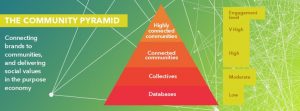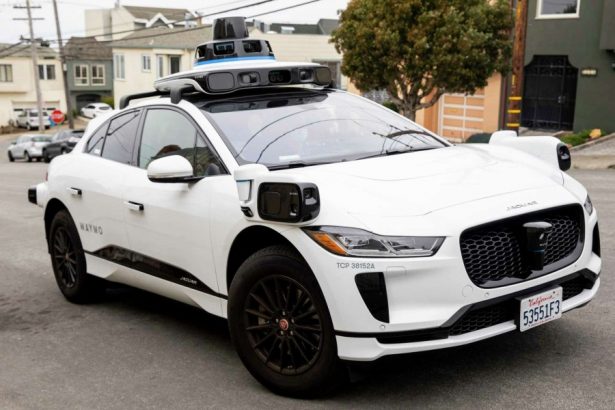The Community Pyramid: Understanding and Engaging Real Communities


While AI and digital technologies are driving brands in one direction of thinking, by contrast, there’s also a trend back to grass-roots thinking and a growing focus back on community.
Management consultants, hungry to take marketing off the agencies are talking about the so-called ‘Third Era of Advertising’, which is all about connecting with communities, not individual targeting.
But another factor that is also driving a refocus on real communities is social values.
From local communities to the global community, every business has an impact upon society, good or bad. But how do you measure it? And how can purpose also deliver profit for the business? As the economist Milton Friedman once said,
“If you can’t measure it, how can you improve it?”
If you are tendering for business to the government (central or local), or seeking grants, you now have to show how what you are doing delivers social values. It’s even a regulation under the Public Services (Social Value) Act 2012.
Businesses bidding for new work are seeing up to 40% of total contract value assigned to social value creation.
What is significant, is that this is about real communities (IRL), not virtual communities (online).

If a business wants to thrive in the purpose-driven economy, it must develop a strategy to plan, create, and prove social value in the local communities in which they work. This isn’t just a neccessity, but common sense.
There are a growing number of frameworks and tools available to help organisations measure and report on social impact, such as the Social Return on Investment (SROI) framework TOMS and the Global Reporting Initiative (GRI) Standards.
While there are dozens of companies willing to measure your social impact, there are also more dynamic new players like ‘My Social Impact’ that is bringing together numeric measurability with a human narrative. They believe that social values need to be routed in real human benefits, not just a number on a spreadsheet – “Making the important measurable, not the measurable important.”

> COMMUNITY – A UNITY THROUGH COMMONALITY
What is the real definition of ‘community’ and why is so attractive to brands?
A community is when a group of people are united through a commonality – a purpose, idea, belief, values, experience, geography, culture… there are 25 definitions according to CONNECT2, one of the leading specialists in helping brands connect with real communities.
A community is not a bunch of names on a customer database. [Please note!]
While social media talks a lot about community, in reality most social media platforms are collectives rather than communities, as there’s little connection between each other, which is a critical factor in defining a real community.
Connectivity, emotion not function, is key to uniting a community. A real sense of identity, of being and belonging.
To be a community people must first feel connected to each other. That requires something that makes them feel engaged – positive or negative.
The Community Pyramid positions 4 levels – from database to highly connected – most brands are in the bottom two. It seeks to measure how deep a brand is engaging a community – the deeper the most influential and effective the relationship will be.
But creating a deep engagement requires a different methodology of thinking from normal marketing – you have to actually engage people, not sell at them.

> THE 3RD ERA OF ADVERTISING
Another reason brands are interested in communities, especially marketing, is that they are more influential than advertising is alone – this is being called the ‘3rd Era of Advertising’. Once an idea, a message or belief enters a community it can spread quickly and be adopted on mass.
This is not a new concept, Edward Bernays, the ‘Father of PR’ and creator of the concept of the ‘influencer’ based all his thinking on engaging communities – his uncle was Sigmund Freud, one of several pioneers of crowd psychology and group think, along with Gustave Le Bon.

They developed the idea that crowds are not the sum of their individual parts, proposing that within crowds there forms a new psychological entity, the herd, characteristics of which are determined by the behaviour of the crowd.
Marketing guru, Mark Earls, also highlights that we think in ‘herds’ rather than as individuals in his highly acclaimed book ‘Herd: How to Change Mass Behaviour by Harnessing Our True Nature.’
A good example is how sports brands have been adopted by key sports communities, from athletics to football to climbing, each has its chosen brands. Look at Gymshark, founded by Ben Francis in his mum’s garage, has built its reputation and loyal customer base by engaging communities around gym goers. One of the fastest growing brands in the sector, it now turns over more than £260m a year.

While brands like Nike may be the number one sports brand, sponsoring the top players and performers, Under Armour created a different culture and community, one that was opposite, it cultivate the upper-coming stars of tomorrow.
Another brand that has built its customer base up through engaging communities, especially younger consumers, is the neo-bank Monzo. It now has over 7 million customers.
Tapping into real communities is something brands need to be very careful to do, get it wrong and you’ll get rejected and even boycotted. Get it right, and the community does all the work for you.
> THE PURPOSE ECONOMY
One area that community engagement has become critical to is purpose, as it tends to align with values. Values is a big part of many communities and so if a brand can align with those of a community it can win them over. But get it wrong and you end up with ‘values disconnect‘.
As a brand, connecting to communities through purpose requires a radically different approach from traditional marketing, a pull strategy rather than a push one. It’s not what you say but what you do that counts, which is why community engagement campaigns are more experiential than media driven.
The other key factor is not to sell, you need to think about winning hearts and minds, to soft sell. Hard selling puts people off.
One brand that built its success off of engaging a key community was Ella’s Kitchen. Its founder Paul Lindley spent two years talking to parents about baby food, what they wanted and what was wrong with the top players, Cow & Gate and Heinz. The outcome was a baby food product that tasted better, was better quality and more contemporary, even down to the packaging.
Mums are a powerful community and when a product enters the ‘mumosphere’ it can rocket in sales. Ella’s Kitchen soon became the adopted brand by many middle-class mum communities and before Cow & Gate and Heinz could respond, they had 17% of the market. Less than 10 years after it was established, the company was sold for $103m to Hain’s.
> THINKING LOCAL
Research (by CONNECT2) shows that consumers are more likely to purchase from retailers that support their local communities. Given that for most retailers, 85%+ of customer sare locals, it makes sense – yet few retailers do. A massively missed opportunity, given it can be a lot cheaper than local marketing.
With so much competition especially between the supermarkets, you’d think they’d spot the opportunity to gain an advantage. But can so often be the case, “common sense is not always common” as management consultancy guru Charles Handy says.
> SOCIAL ACTIVISM

Of course, instead of tapping into existing communities, you can build your own. Social activism – from Extinction Rebellion to saving the local pub – have built communities around their beliefs and values. Using communities as a marketing force isn’t new, since Victoria times activist have cultivated communities of fellow believers, it was a key tactic of the Suffragettes – an activist women’s organisation in the early 20th century who, under the banner “Votes for Women”, fought for the right to vote in public elections in the United Kingdom. It’s real strength was in te power of its community of women, united by a common goal.

> LOSING TOUCH WITH THE HUMAN CONSUMER
For past two decades, we have been distracted by data and targeting, that promised brands they could sell better. But in many cases, it hasn’t, and it’s getting more expensive. And while the architects of algorithms claim they can predict what we are going to buy next, the reality is, they are still guessing.
Two key factors they have missed – we tend to make purchases within the mindset of our communities, not as individuals. Second, humans are emotional and unpredictable.
Bernays knew that as we are pack animals, that when we are in a group we seek to align with the values and behaviour of the group, even surrender to it, and therefore if you can influence the key players, the rest will follow.
If the key influencers in a community are wearing low-slung jeans, the whole community will too. It’s how trends start and flourish.
Data can be too narrow-minded, too neuro-linear, it sees people through a keyhole and assumes too much and bases its outcomes on too many assumptions, the main one being repeat behaviour. It thinks humans are predictable, and the simple truth is, we aren’t.
I have thrown the gauntlet down to many data people, “tell me what my wife would like for Christmas,” and to date no one has come close.
> REHUMANISING YOUR THINKING
Engaging real communities requires a human-centeric approach that goes beyond technology and artificial intelligence – which may go against the media myth that AI will persuade us all to buy, buy, buy. Brands must make genuine connections and adopt a different mindset from traditional marketing and PR practices.
Only by understanding the essence of communities and their influential power, brands can tap into the community’s collective mindset, align with shared values, and leverage the strength of community engagement.
In an era where purpose-driven initiatives and social values are increasingly significant, successful brands are those that are recognising the importance of building strong connections with real communities and are rehumanising their thinking.
……………………………………………………………………………………………………………
Dr Chris Arnold is a specialist in connecting brands to community, purpose-driven marketing and the author of Ethical Marketing And The New Consumer. He was also the Brand Republic blogger on Ethical Marketing.
To find out more about Social Impact Reporting contact me via LinkedIn.
Or email me vichris@me.com or call me 07778 056686 (no sales calls).
Defining Social Purpose.
Improving Social Impact.
Measuring Social Values.

LINKS:
www.connect2-uk.com
www.socialvaluesuk.org
www.mysocialimpact.org
www.newcitizenship.org.uk
3rd Era of Advertising : https://www.linkedin.com/feed/update/urn:li:activity:6983434715659673600?utm_source=share&utm_medium=member_desktop



